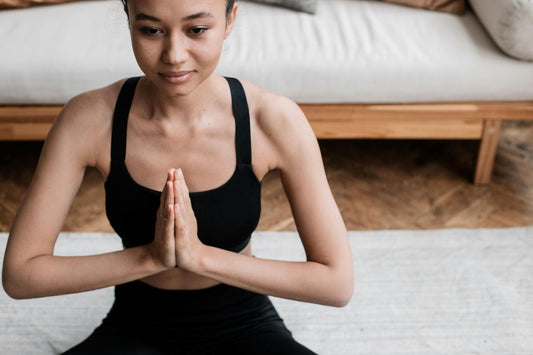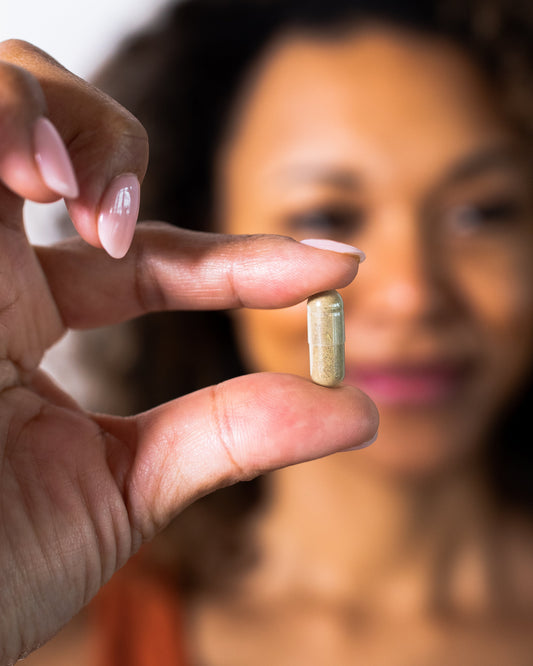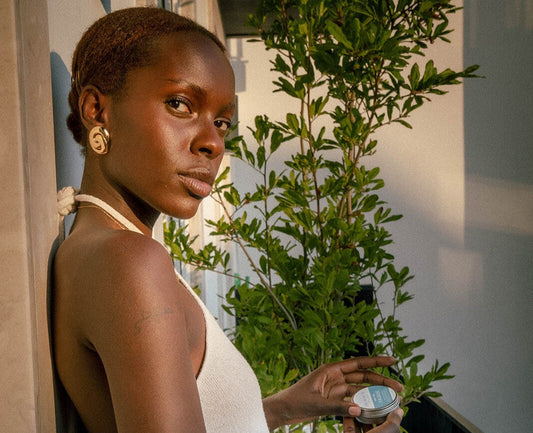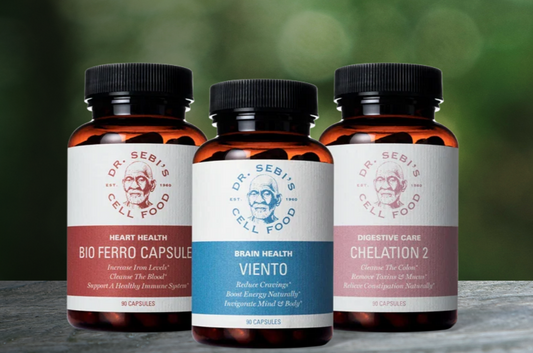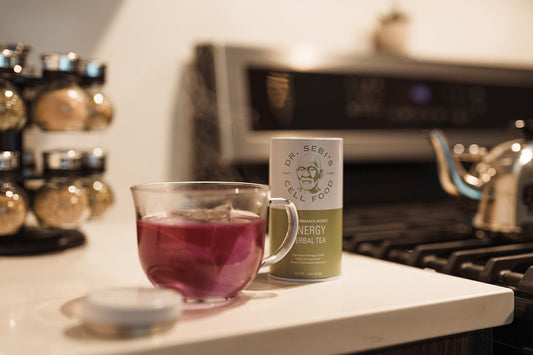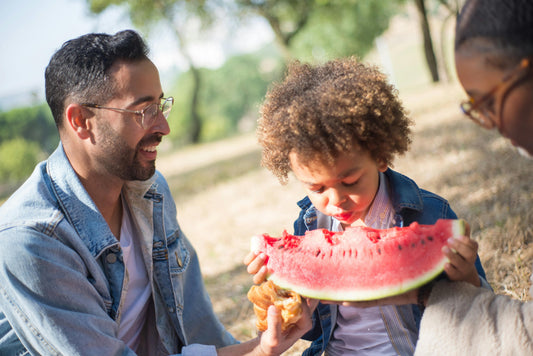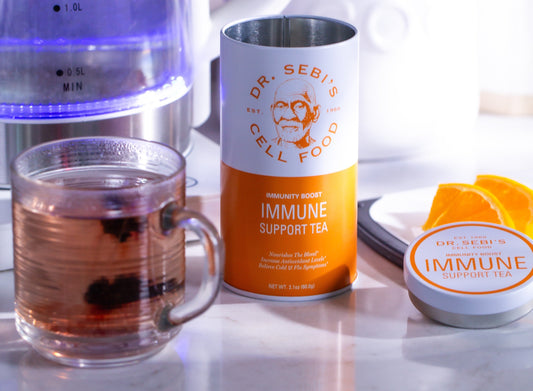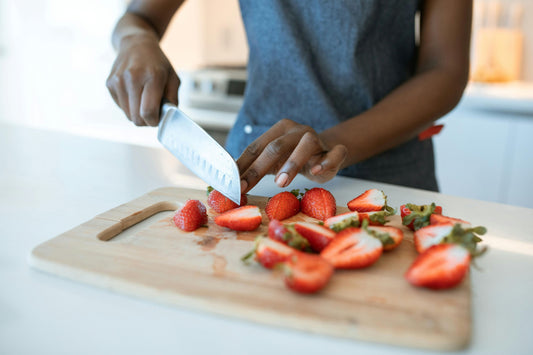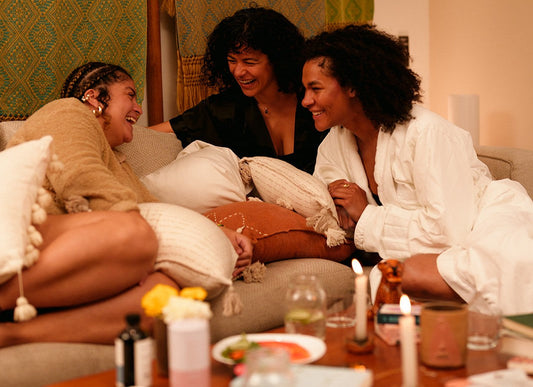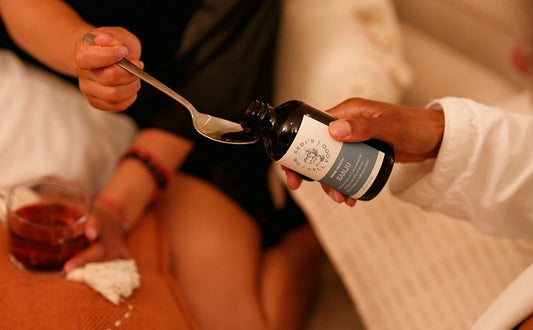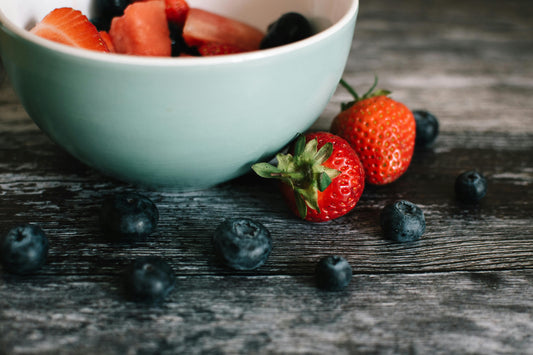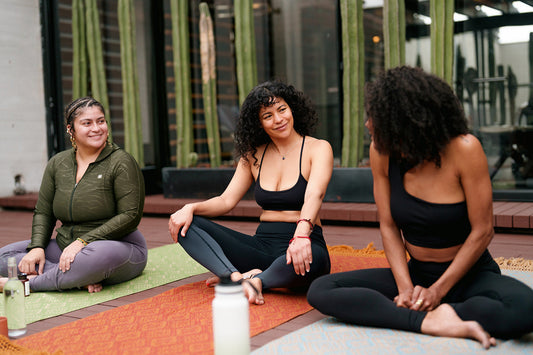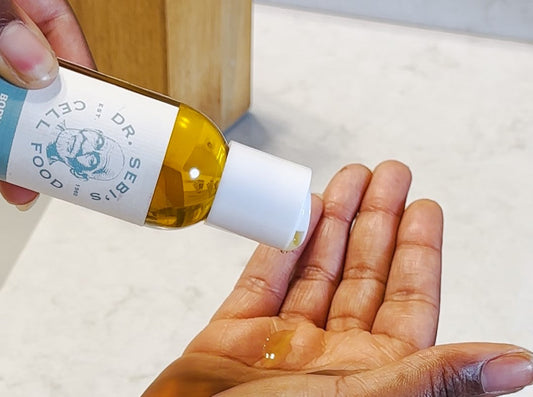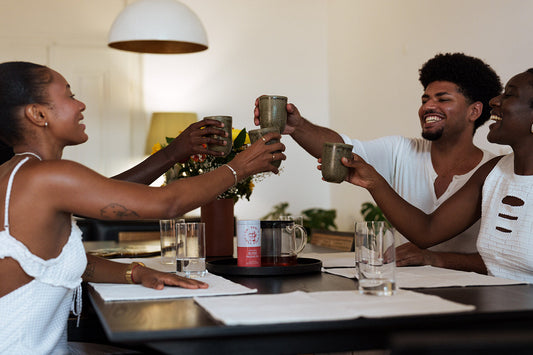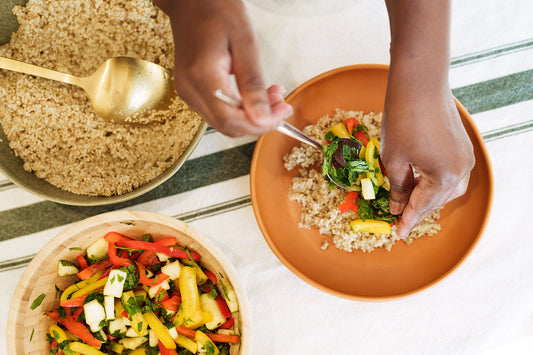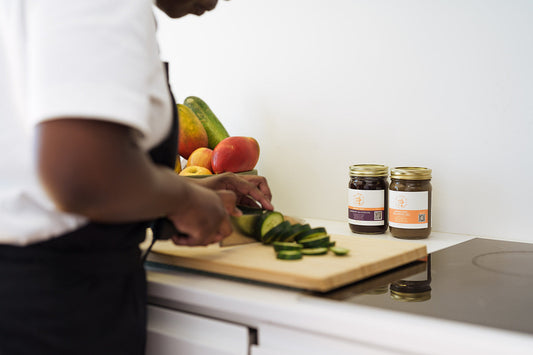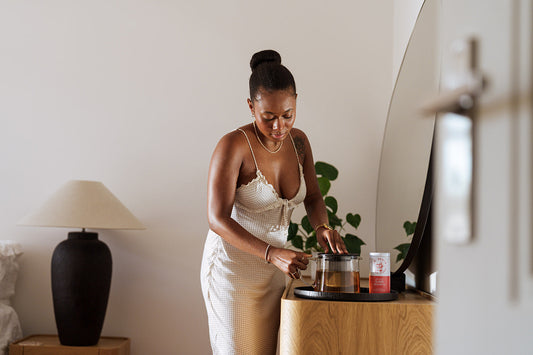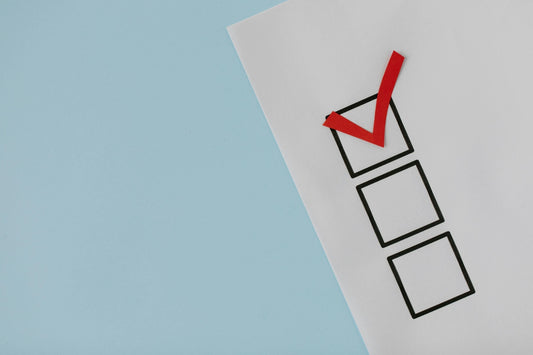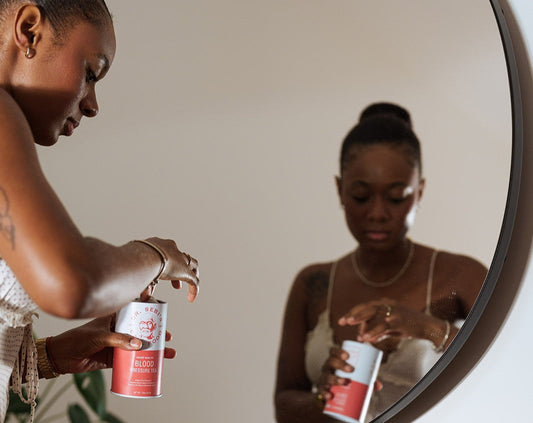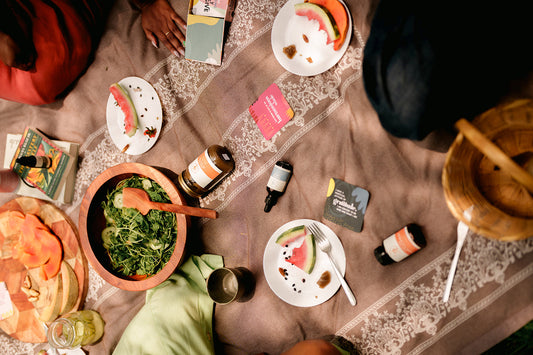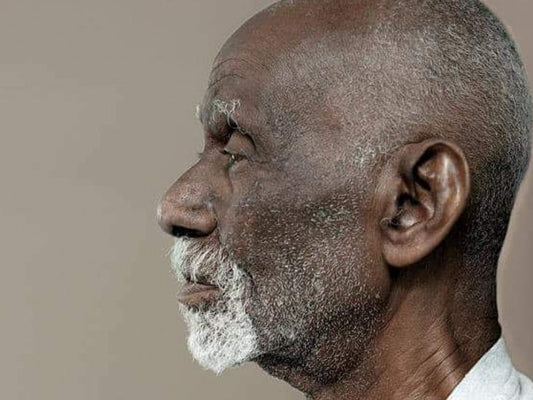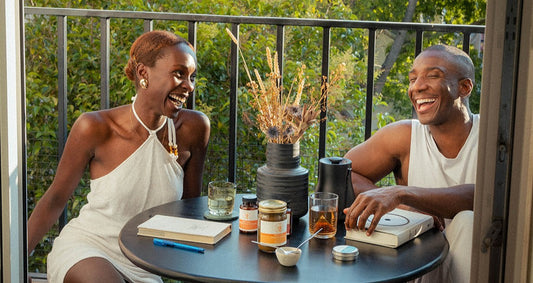A radiant smile starts with good oral hygiene, and there are plenty of natural methods that can help whiten your teeth without harsh chemicals.
Traditional teeth whitening often involves ingredients like hydrogen peroxide or carbamide peroxide, which can cause tooth sensitivity or gum irritation. And excessive use of chemical whitening products can even lead to enamel degradation over time.
Natural tooth whitening methods not only avoid these risks but also support a balanced pH level in the mouth, preventing bacterial growth and maintaining enamel strength. With ingredients that are both safe and effective, you can protect your dental health while still achieving a pearly white smile.
What Causes Yellow Teeth?
Yellow teeth can result from a variety of factors, both intrinsic and extrinsic. Extrinsic causes include staining substances like coffee, tea, red wine, and tobacco, which leave surface stains on the enamel.
Intrinsic discoloration, on the other hand, occurs within the tooth itself and can be caused by aging, exposure to high levels of fluoride during childhood, certain medications, and trauma to the teeth.
According to the American Dental Association, poor dental hygiene, which allows plaque and tartar to build up, also plays a significant role in tooth discoloration. Genetic factors can also affect the thickness and smoothness of enamel, influencing how susceptible teeth are to staining.
How to Naturally Whiten Teeth
Turning to nature offers a variety of safe and effective methods to brighten your smile, from everyday ingredients to simple lifestyle changes.
Oil Pulling
Oil pulling is an Ayurvedic practice that involves swishing a tablespoon of oil around in your mouth for about 15 to 20 minutes. This method—usually done with coconut oil—is believed to detoxify the mouth by pulling out bacteria and promoting overall oral hygiene.
According to research from 2017 in the Journal of Ayurveda and Integrative Medicine, oil pulling with coconut oil can significantly reduce plaque formation and gingivitis, partly due to the oil's natural antibacterial properties. Additionally, many proponents of this technique report that it helps to naturally whiten teeth over time.
Eating Alkaline
An apple a day keeps the dentist away! Apples, often referred to as 'nature’s toothbrush,' mechanically clean teeth and stimulate the gums due to their fibrous texture.
Other alkaline foods can help, too! Strawberries contain malic acid, which is thought to naturally remove discoloration on the surface of the teeth. When you consume alkaline-rich foods such as leafy greens, nuts, and seeds, they help balance the pH levels in your oral cavity.
This balance is vital because a less acidic environment reduces the growth of harmful bacteria that cause cavities and gum disease. Additionally, many alkaline foods are rich in essential nutrients like calcium and phosphorus, which are important for strengthening tooth enamel and promoting overall oral health.
Brushing Teeth After Eating
Regularly brushing your teeth after eating, especially with Dr. Sebi’s Tooth Powder or a natural toothpaste, helps keep your teeth clean and bright. It removes food particles and prevents the formation of plaque, which can lead to staining and decay if not addressed promptly.
However, you should wait at least 30 minutes before you brush your teeth after consuming acidic foods or beverages, such as citrus fruits, to avoid damaging tooth enamel, according to the American Dental Association.
Brushing Your Tongue
Brushing your tongue is an often overlooked—but essential—part of oral hygiene that can contribute to a healthier mouth and a brighter smile. The tongue harbors bacteria and food particles that can lead to bad breath and contribute to tooth decay.
According to the American Dental Association, incorporating tongue brushing into your daily dental routine not only helps in getting rid of bad breath (halitosis) but also removes bacteria that could otherwise deposit on the teeth, causing staining and dental plaque.
Using Baking Soda
Baking soda, or sodium bicarbonate, is a mild abrasive that can be effective in removing surface stains on teeth, making it a popular ingredient in many toothpastes. A 2019 study in the International Journal of Oral Hygiene found that toothpastes containing baking soda were significantly more effective at removing plaque than those without it.
When used as a toothpaste, either alone or mixed with water into a paste, baking soda can help scrub away stains from coffee, tea, and smoking.
Practicing Good Oral Hygiene
According to the Centers for Disease Control and Prevention, good oral hygiene significantly reduces the risk of chronic oral conditions and maintains the natural whiteness of your teeth by removing plaque and preventing the tartar buildup, which can lead to yellowing and stains.
This includes making sure to brush your teeth twice a day, floss daily, and visit the dentist on a regular basis for cleanings and check-ups. Dental check-ups also ensure that any potential issues that could affect the color of your teeth, such as decay or gum disease, are addressed early.
Limiting Staining Foods and Beverages
Foods and beverages with strong colorants like coffee, tea, red wine, and certain fruits can stain teeth over time. Substances like tea and coffee contain tannins that can lead to staining when they adhere to dental enamel
To minimize staining and maintain a whiter smile, minimize the intake of these substances or rinse the mouth with water immediately after consumption to reduce their contact with tooth enamel. Using a straw when drinking beverages that stain can also help by reducing the liquid's direct contact with the teeth.
What Doesn’t Work
While there are many effective natural methods for whitening teeth, some popular remedies do not work and can even be harmful. For instance, apple cider vinegar is often touted as a natural whitening agent, but it can actually do more harm than good.
According to 2021 research in the Journal of Medicinal Food, frequent exposure to acidic substances like vinegar can lead to significant enamel erosion, which not only weakens teeth but can also make them more susceptible to discoloration and decay.
Similarly, dentists also discourage using lemon juice or other citrus fruits directly on teeth as a tooth whitening agent due to their corrosive effects on enamel. Here are a few other methods to be wary of:
- Fruit Peels (like banana or orange peels): Rubbing fruit peels on teeth is a popular recommendation on social media, but there's no scientific evidence supporting its effectiveness, and it can potentially damage enamel.
- Turmeric: Often claimed to whiten teeth, turmeric has no proven dental benefits for whitening and may leave a temporary yellow tint on teeth.
- Hydrogen Peroxide (in high concentrations): While it's a common component in many whitening products, using hydrogen peroxide in high concentrations or homemade mixtures can lead to gum irritation and enamel erosion.
Frequently Asked Questions
1. Are whitening strips bad for your teeth?
Yes, whitening strips can be harmful to your teeth. They often contain high levels of bleaching agents that can cause tooth sensitivity and damage the enamel when used excessively or incorrectly.
2. Why do I have white spots on my teeth?
White spots on teeth can be caused by fluorosis, which results from excessive fluoride intake during tooth development, or demineralization, often associated with poor dental hygiene and the buildup of plaque. They may also be an early sign of tooth decay, making it important to see a dentist for proper diagnosis and treatment.
3. What vitamin deficiency causes yellow teeth?
Yellow teeth are not typically caused directly by a vitamin deficiency. However, deficiencies in nutrients such as vitamin D and calcium can affect dental health by weakening enamel, which might make teeth more susceptible to discoloration and decay.





